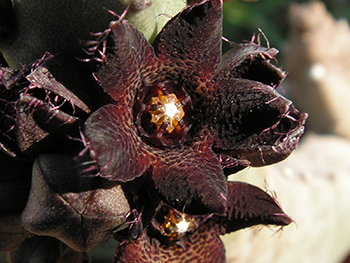Phytochemical Analysis and Partial Characterization Caralluma Attenuata Extract by TLC

Abstract:
Medicinal and natural herbal plant products are traditionally used
from long time in many countries. The current work was to evaluate the flavonoid rich fraction in Caralluma attenuate
and other phytochemical analysis of stem of the plant. Preliminary phytochemical analysis revealed the presence of phytochemicals
such as alkaloids, polyphenols, flavonoids and tannin content in methanol extracts
of stem then they were determined
spectrometrically. The present study provided, a detailed report on the isolation
and characterization of Thin Layer Chromatography from stem of Caralluma attenuate.
The methanol extract were
used for various biological properties and in vivo assays which is used discovering new drugs.
Keywords: Caralluma attenuata, phytochemical screening, medicinal uses and TLC.
References:
[1]. Ajit K.D,
Dutta B. K and Sharma G. D (2007) “Medicinal plants used by different tribes of
Cachar district, Assam”. Indian Journal Of traditional KnowledgeVol7 (3),
pp 446-454.
[2]. Balasubramanian.P,
Rajasekaran.A and Prasad.S.N (1997) “Folk Medicine of the Irulas of Coimbatore Forests”.
Ancient Science of Life Vol XVI 3, pages 222 – 226.
[3]. Beckman
CH. Phenolic-storing cells: keys to programmed cell death and periderm formation
in wilt disease resistance and in general defence responses in plants? Physiol.
Mol. Plant Pathol 2000; 57:101-10.
[4]. Brahmachari
G. Mother Nature: An inexhaustible source of drugs and lead molecules. In: Brahmachari
G, Editor. Chemistry, Biochemistry and Pharmacology. 1 st ed. New Delhi:
Narosa Publishing House Pvt. Ltd.; 2009. p. 1-20.
[5]. Buenz
E.J, Schnepple D.J and Bauer B.A (2004). Techniques: Bioprospecting historical herbal
texts by hunting for new leads in old tomes. Trends PharmacolSci 25: pp.494-498.
[6]. Divya.
S., Naveen. K.K., Ramachandran. S and Dhanaraju. M. D. (2011) “Wound Healing and
In Vitro Antioxidant Activities of Croton bonplandianum Leaf Extract in Rats”. Global Journal of Pharmacology 5 (3): 159-163.
[7]. Kirti
S Prabhu, Richard Lobo and Annie Shirwaikar. Antidiabetic properties of the alcoholic
extract of Sphaeranthus indicus in streptozotocin-nicotinamide diabetic rats.
Journal of Pharmacy and Pharmacology, 2008; 60: 909-16.
[8]. Kovalev S. V. (2009). Flavonoids from
Lotus ucrainicus and I. arvensis. Chemistry of Natural Compounds, Vol. 45, No. 4. Pp.
550-551.
[9]. Lenin
B.J and Venkat R.S. (2009). “Traditional Uses of Some Medicinal Plants by tribals
of Gangaraju Madugula Mandal of Visakhapatnam District, Andhra Pradesh”. Ethnobotanical
Leaflets 13: 388-98.
[10]. Mahadeswara
Swamy (2006) Ban Tulsi (Online), Available: http://www.flowersofindia.net/catal
og/slides/Ban%20Tulsi.html (25 Jul, 2006).
[11]. Scalbert,
A., Manach, C., Morand, C., Remesy, C., Jimenez, L., (2005). Dietary polyphenols
and the prevention of diseases. Crit. Rev. Food Sci. Nutr. 45, pp.287-306.
[12]. Spencer
JP, Abd El Mohsen MM, Minihane AM, Mathers JC. Biomarkers of the intake of dietary
polyphenols: strengths, limitations and application in nutrition research. Br J
Nutr 2008; 99:12-22.

